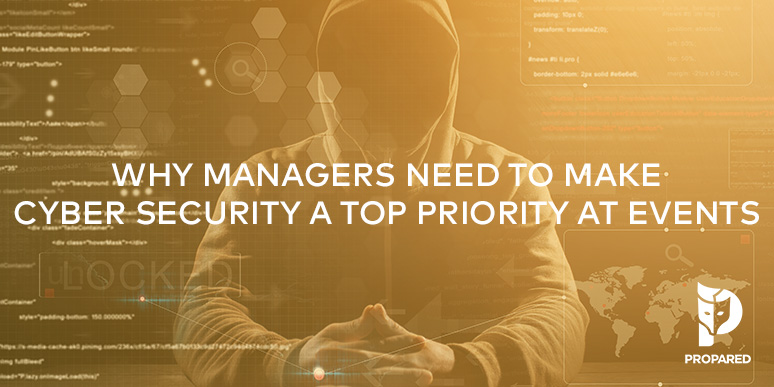
The live event world has been rocked by a series of catastrophic attacks over the past 8 months. Paris, Orlando, and Nice, among others have justly raised concerns about security and safety for attendees. Though such attacks are still (thankfully) rare, the effort to improve safety processes is an important and vital undertaking.
However, there is a different kind of attack, one that isn’t so rare. One that may be less shocking when it happens but also has potentially devastating consequences. We’re talking of course about cybercrime. In the first installment of our series on this important topic, we give a brief overview of the landscape and identify some vulnerabilities in event planning you might be missing.
What is Cybercrime?
Cybercrime is defined as any illegal activity that uses a computer as its primary means of commission. And it may be the least talked about health and safety threat in events. Don’t believe us? During the 2008 Olympics in Beijing, reports suggested that event organizers received over 12 million cyberattacks per day. More recently, security officials at Levi’s Stadium in Santa Clara, California confirmed 100,000 potential cyber threats were identified during Super Bowl 50.
And these are large scale events, where security is already a top priority and organizers spend significant sums to shore up their systems. What about the tens of thousands of other events that are produced every year? Director of National Intelligence, James Clapper recently was quoted as saying, “While cyberattacks on critical infrastructure could have dire effects — even fatal — I am more concerned with the constant trickle of smaller intrusions and attacks happening every day.”
That’s the event community. That’s meetings and conferences, trade shows, and festivals. And as the industry continues to push into new tech territory, the risk of information breach becomes greater.
Technology and Vulnerabilities
In addition to running event production systems using automated tools, computers, and wireless devices, event managers and marketers are suddenly holding highly sensitive information about attendees. While such operational advancements and data collection is meant to improve event experiences, it also could be a vulnerability for hackers to exploit. With great power comes great responsibility (tip of the cap, Uncle Ben).
In order to anticipate and discourage cyber criminals from targeting your events, you must first understand where your event’s vulnerabilities are, what potential malicious activities can take place, and where the value lays for cyber criminals in targeting your live event. Once you have answered those questions, you can work to identify how to best safeguard against and handle potential threats.
And you aren’t alone. Cyber security has become a top priority for state and local governments, Fortune 500 companies, and businesses across all sectors.
In our upcoming installments we’ll be diving more specifically into the what and why of cyberattacks.
-
What are the potential cyber security risks for live events?
-
Why would someone execute a cyberattack or target a live event?
-
What factors can increase the likelihood of being a target for cyber criminals?
-
What are some ways that you can identify, track, and prevent such malicious activity?
We hope you’ll join in this discussion. Cyber security, just like physical security is an important effort we all must undertake. Have you had to deal with cyber intrusions at your events? How secure do you feel your data (and your attendees’ data) is? What best practices or systems do you implement?



